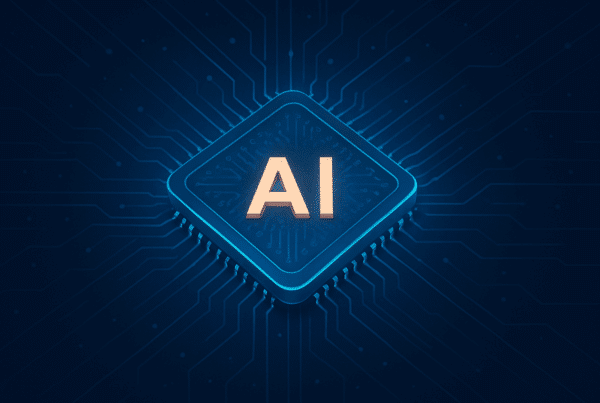AI Meets XiL: Leveraging Machine Learning to Optimize Hardware-in-the-Loop Testing
As embedded systems continue to grow in complexity and software-defined architecture becomes the standard in mobility, traditional testing methodologies are reaching their limits. In response, a new convergence is emerging. Artificial intelligence is being integrated into XiL environments (Model-in-the-Loop, Software-in-the-Loop, and Hardware-in-the-Loop), reshaping how validation, debugging, and system optimisation are conducted in the automotive, aerospace, and defence sectors.
The Problem: Exponential Complexity, Static Test Capacity
Modern safety-critical systems involve millions of lines of code, multiple interacting ECUs, and unpredictable real-world edge cases. Manually constructing exhaustive test cases is no longer practical. In applications such as autonomous driving, fly-by-wire avionics, and active safety systems, the number of input combinations and failure modes exceeds what traditional HiL benches can realistically validate in a fixed campaign window (Kürschner et al., 2022).
This is where AI-enhanced XiL offers tangible benefits.
Where AI Adds Value in XiL Workflows
Artificial intelligence is not replacing physical test systems but is being used to enhance them in specific areas to improve efficiency, insight, and coverage. Key use cases include:
- Test Case Generation and Prioritisation
Machine learning algorithms can identify gaps in test coverage by analysing model behaviour, historical faults, and real-world field data. These tools automatically generate targeted test cases, focusing on conditions where failures are most likely to occur (Zhao et al., 2021). This ensures smarter test planning and more efficient use of bench time.
- Surrogate Modeling and Co-Simulation
In aerospace and defence, AI is used to build surrogate models that approximate the behaviour of complex subsystems. Trained on high-fidelity simulation data, these models reduce latency while maintaining sufficient accuracy for early-stage integration. This is particularly useful in real-time co-simulation across domains such as structural dynamics, thermal loads, and control logic (Gärtner et al., 2021).
- Anomaly Detection and Adaptive Testing
Unsupervised learning models are being applied to live test data to detect anomalies, degradation trends, and unusual behaviour patterns. These systems enable adaptive testing, allowing engineers to respond to outliers in real time, increasing diagnostic coverage and reducing manual oversight.
- Reinforcement Learning for Control Loop Tuning
Reinforcement learning is increasingly being applied to control system development. In automotive and aerospace applications, RL agents are trained in simulated environments and then validated through XiL setups. This approach reduces time spent on traditional PID tuning and improves performance under edge-case conditions (Chen et al., 2023).
Real-World Adoption and Emerging Trends
Several OEMs and Tier 1 suppliers have begun integrating AI into their XiL workflows. Vendors such as AVL, dSPACE, and Siemens have introduced AI toolchains that support predictive diagnostics, test automation, and model abstraction.
For example, Siemens’ Simcenter tools now feature AI-driven test orchestration. In aerospace, NASA and ESA are exploring dynamic testbeds where AI adjusts simulation parameters in response to real-time behaviour. In the defence sector, adversarial AI techniques are being used to simulate hostile environments that would be difficult or unsafe to replicate in physical tests (Zhou et al., 2022).
Key Challenges and Open Questions
Despite its advantages, AI integration introduces several challenges:
- Model explainability. Regulatory bodies require transparency in validation logic, which is difficult with black-box models.
- Data dependency. Poorly curated training data may result in inaccurate prioritisation or missed failure modes.
- Real-time performance. AI must meet strict timing and determinism constraints to be viable in closed-loop testing.
As AI takes on more responsibility in validation pipelines, new certification frameworks and verification methods will be necessary to ensure reliability, traceability, and safety.
Conclusion
AI-enhanced XiL testing is becoming a critical enabler for efficient and robust validation in mobility engineering. By augmenting traditional workflows with intelligent algorithms, engineers are able to identify faults earlier, adapt testing strategies dynamically, and improve simulation coverage in ways that were previously not feasible. As systems grow more complex and development cycles continue to shrink, this convergence between AI and XiL will become increasingly central to the future of safety-critical testing.
References
- Chen, Y., Liu, H., and Wang, Z. (2023). Deep reinforcement learning for adaptive vehicle control: A hardware-in-the-loop approach. IEEE Transactions on Intelligent Vehicles, 8(1), 99–111.
- Gärtner, J., Ehlers, D., and Mrozek, T. (2021). Efficient surrogate modeling for multi-domain aerospace simulation. CEAS Aeronautical Journal, 12(2), 345–357.
- Kürschner, S., Winkler, S., and Köppl, C. (2022). Addressing complexity in automotive HiL testing using AI-enhanced coverage analysis. SAE Technical Paper Series, 2022-01-0891.
- Siemens AG. (2023). Simcenter: The future of integrated test environments. Retrieved from https://www.plm.automation.siemens.com
- Zhao, Z., Wang, X., and He, X. (2021). AI-powered test case generation for embedded control systems. Journal of Systems and Software, 179, 111036.
- Zhou, W., Ren, K., and Liu, J. (2022). Adaptive threat simulation in defense system validation using generative adversarial networks. Defense Technology, 18(4), 925–938.









